The US and Russia must re-assess their strategic relations in a world without New START
By Steven Pifer | June 13, 2023
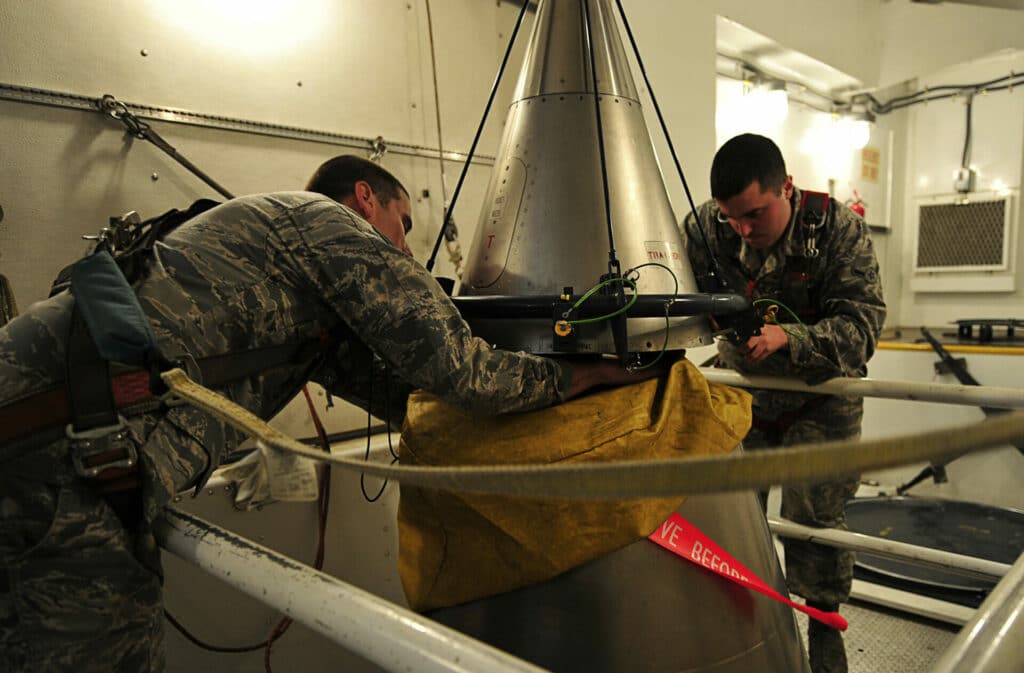
The Russian government earlier this year did a so-called “suspension” of its participation in the 2010 New Strategic Arms Reduction Treaty (New START), indicating that it would no longer provide biannual data updates or notifications, nor would it allow on-site inspections provided for by the treaty. In the subsequent three months, the US government responded by taking similar steps.
Both Moscow and Washington maintain that they continue to observe New START’s numerical limits. However, the absence of data updates, notifications, and on-site inspections will erode their ability to monitor each other’s compliance, particularly regarding the limit on deployed strategic warheads.
The sides continue to exchange notifications required under other bilateral agreements that could help avoid miscalculation. Still, the loss of the information provided by New START’s monitoring provisions will decrease each sides’ confidence in their understanding of the other’s strategic forces. In the near term, it will marginally increase nuclear risk.
Russia’s “suspension.” On February 21 of this year, President Vladimir Putin stated that Russia would “suspend” its participation in New START. Russian officials clarified that Russia would continue to observe New START’s numerical limits but would not provide the biannual data updates or notifications required by the treaty, nor would they permit US inspectors to carry out inspections. This followed decisions by Moscow in summer 2022 not to resume inspections and in November 2022 not to take part in a meeting of the Bilateral Consultative Commission, the body established by New START to address the treaty’s functioning.
Despite these actions, on February 22, a senior Russian Defense Ministry official reiterated to the Duma (Russia’s lower legislative body) that Russia intended to observe New START’s numerical limits. New START limits the United States and Russia each to no more than 700 deployed intercontinental ballistic missiles (ICBMs), submarine-launched ballistic missiles (SLBMs), and heavy bombers; no more than 800 deployed and non-deployed ICBM/SLBM launchers and deployed and non-deployed heavy bombers; and no more than 1,550 warheads on deployed ICBMs and SLBMs and warheads counted for deployed heavy bombers (one warhead for each deployed heavy bomber). Following rapid approval by the Duma and the Federation Council (Russia’s upper legislative body), Putin signed the law mandating “suspension” of New START on February 28.
Putin’s decision appears motivated by his frustration over the stumbling course of Russia’s war against Ukraine and continued US provision of arms and ammunition to the Ukrainian military. The decision suggests a personal obsession with Ukraine that undercuts other Russian security interests, as Moscow has benefited from New START’s limits and its verification and transparency measures just as much as did Washington.
US reaction and countermeasures. US officials have said the Russian “suspension” is “legally invalid,” noting correctly that New START makes no provision for a side to unilaterally cease providing data updates or notifications, or to impose a blanket ban on on-site inspections. Rather, they termed those steps violations of Russia’s obligations under New START.
On March 28, US officials announced that they had informed their Russian counterparts that the United States would not provide the March 1 data update, given Russia’s refusal to provide its update. On May 12, the State Department nonetheless released the US aggregate numbers, though not the more detailed specifics normally provided in the March 1 data update “in the interest of transparency and the U.S. commitment to responsible nuclear conduct.”
On June 1, the State Department announced further countermeasures responding to the New START violations by Russia: Washington would now cease also to provide notifications regarding the status or location of items accountable under the treaty, would no longer facilitate inspections on US territory (e.g., it would revoke visas previously issued to Russian inspectors), and would stop providing Russia telemetry information from US ICBM and SLBM launches. Washington also made clear its commitment to “full and mutual implementation of the New START Treaty” and said that it had informed Moscow that the United States would reverse the countermeasures if Russia returned to compliance.
The State Department announcement indicated that the United States would continue to provide notifications under other bilateral agreements between Washington and Moscow, specifically the 1988 Ballistic Missile Launch Agreement on advance notification of ICBM and SLBM launches and 1989 Agreement on Reciprocal Notification of Major Strategic Exercises regarding notification of heavy bomber exercises. The Russian government thus far appears ready to provide notifications required by those agreements as well.
In focus: The impact of US countermeasures to Russia’s New START violations
By Marshall L. Brown, Jr.
Former legal advisor to the US New START delegation
The US State Department’s fact sheet, “U.S. Countermeasures in Response to Russia’s Violations of the New START Treaty,” released on June 1, 2023, describes four countermeasures that the United States has adopted in response to the Russian Federation’s “on-going violations” of the New Strategic Arms Reduction Treaty (New START).* The fact sheet characterizes Russia’s suspension of New START as “legally invalid,” while the US countermeasures are described as “lawful” and “fully consistent with international law.” These countermeasures are further classified as being “proportionate” and “reversible,” which are permitted under international law “in order to induce a state to return to compliance with its international obligations.”
There does not appear to be any question that the United States is acting in accordance with international law in adopting countermeasures. Each specific countermeasure chosen seems to be proportionate to Russian actions that have raised compliance concerns, and these measures are not irreversible. Indeed, the fact sheet notes that the United States conveyed its “desire and readiness to reverse the countermeasures and fully implement the treaty if Russia returns to compliance.” Whether these four countermeasures will induce Russia to return to compliance with New START, however, is not clear.
* These “on-going violations” do not appear to be based simply on Russia’s decision to suspend the New START Treaty. The most recent (April 2023) State Department’s New START Treaty Annual Implementation Report states that, based on the information available as of December 31, 2022, “the United States cannot certify the Russian Federation to be in compliance with the terms of the New START Treaty.”
Greater uncertainty for New START. The good news is that both sides say they will continue to observe New START’s numerical limits. If neither side interferes with the other’s national technical means of verification (e.g., surveillance satellites), both should be able to monitor with fairly high confidence the other’s compliance with two of the treaty’s numerical limits—specifically the limit of no more than 800 deployed and non-deployed ICBM/SLBM launchers and deployed and non-deployed heavy bombers, and the limit of no more than 700 deployed ICBMs, SLBMs, and heavy bombers.
According to the last mutual data exchange for September 1, 2022, Russia had 759 deployed and non-deployed launchers and heavy bombers (compared to 800 for the United States), of which 540 ICBMs, SLBMs, and heavy bombers were deployed (compared to 659 for the United States).
The more difficult problem for each side will be monitoring deployed strategic warheads. The last data update put the Russian number at 1,549—just one under the limit—and the US number at 1,420. Absent notifications and on-site inspections, the sides over time will have decreasing confidence in their assessment of the other’s deployed strategic warhead number.
Under New START, on-site inspections provide the key to monitoring deployed strategic warhead numbers. For example, when a US inspection team conducted a Type One inspection at a Russian ICBM base, the Russians had to declare not just the aggregate number of deployed strategic warheads but also the number of strategic warheads emplaced on each deployed ICBM at the base. (Under New START, Type One inspections focus on sites with deployed and non-deployed strategic systems, whereas Type Two inspections focus on sites with only non-deployed strategic systems.) The US team could then randomly select one deployed ICBM for inspection to confirm that the number of warheads on that ICBM matched the declared number. That created a situation in which cheating could be discovered.
Absent New START’s inspections, the sides no longer must worry about being caught cheating. And that creates a risk.
Both US and Russian militaries have the ability to “upload” their ICBMs and SLBMs, that is, to place additional warheads on ICBMs and SLBMs that carry fewer warheads than their capacity. For example, US Trident D5 missiles can carry up to eight warheads each but currently carry on average only four or five to meet New START’s 1,550 limit on deployed strategic warheads. In the extreme, both sides could add many of hundreds of warheads beyond the 1,550 limit on existing deployed ICBMs, SLBMs, and heavy bombers. Absent inspections, uploading ballistic missiles beyond the treaty limit likely would not definitively be determined by the other side.
New START notifications provided information on day-to-day changes in the sides’ strategic forces, for example, when an ICBM or SLBM became deployed or non-deployed, or when a solid-fueled ICBM or SLBM exited a production facility. Prior to the sides’ cessation of providing notifications, they had exchanged more than 25,000 of them since the treaty entered into force in 2011—a rate of over 2,000 per year. The end of the notifications will mean that each side will have less visibility into the other’s strategic forces and changes occurring therein.
New START provided that test launches of ICBMs and SLBMs would broadcast telemetry information and that both sides, by mutual agreement, would exchange telemetric information on up to five launches per year. The exchanges have now ceased. Both countries likely already have telemetric information on most of their strategic ballistic missiles, which have been tested and deployed in their respective forces for years. However, Russia’s new SS-29 Sarmat ICBM, intended to replace the heavy SS-18 ICBMs, has only had two test flights to date.
Impact on strategic stability. Continued adherence to the 1988 Ballistic Missile Launch Agreement and 1989 Agreement on Reciprocal Notification of Major Strategic Exercises will be crucial to reduce the risk of misinterpretation resulting from ICBM or SLBM launches or of some heavy bomber exercises. The increased nuclear risk in the near term from the breakdown of New START’s monitoring provisions would appear to stem less from the risk of one side misinterpreting a single act—such as an un-notified movement of an ICBM or SLBM—and more from the overall loss by both sides of broad understanding of the other’s strategic forces. That increases the prospect that one or both will engage in worst-case assumptions. They could come to believe, correctly or incorrectly, that the other side had violated New START limits. That raises the prospect of a destabilizing arms race. Some US senators have already called for the United States to withdraw from the treaty; such a move could trigger decisions in Russia to increase their strategic warhead numbers.
The Biden administration has time to consider what to do. Recent developments do not pose an immediate strategic concern for the United States. In 2012, a Pentagon report noted that: “Russian deployment of additional strategic warheads, which, even if significantly above the New START Treaty limits, would have little to no effect on the U.S. assured second-strike capabilities… The Russian Federation, therefore, would not be able to achieve a militarily significant advantage by any plausible expansion of its strategic nuclear forces, even in a cheating or breakout scenario under the New START Treaty.”
That conclusion stemmed largely from the large number of survivable deployed strategic warheads that the United States routinely maintains on ballistic missile submarines at sea. The same is probably true of Russia with its ballistic missile submarines and mobile ICBM force.
The 2012 US Defense Department’s assessment likely pertains today, as US and Russian strategic forces have not changed much in number or quality over the past decade. However, strategic concerns will grow over the longer term, especially as China enlarges its strategic forces. Moreover, the Russian violations and US countermeasures pose now the question of the future of strategic arms control.
A small ray of hope may have emerged recently, though nothing has yet come of it. On June 2, National Security Advisor Jake Sullivan stated that Washington was prepared to engage with Russia in bilateral arms control discussions without preconditions in order to “manage nuclear risks and develop a post-2026 arms control framework.” (New START expires by its terms in February 2026.) That would appear to be a change in the US approach, as Washington had indefinitely paused the dialogue with Moscow on strategic stability questions following Russia’s February 2022 invasion of Ukraine.
On June 5, Kremlin spokesperson Dmitry Peskov termed Sullivan’s remarks “important and positive,” and said that Russia would await “concrete proposals from Washington.” However, two days earlier, Deputy Foreign Minister Sergei Ryabkov gave a more skeptical assessment while noting that the Russian Foreign Ministry would later offer a more considered response. Moscow has yet to provide that assessment.
Restoration of a US-Russian dialogue on issues related to nuclear arms control and strategic stability issues would be a positive development, even though the two sides are not implementing New START-mandated monitoring measures and no early breakthrough could be expected. Washington has already expressed readiness, and Moscow has yet to take up the offer. Expectations should be modest though. As with New START, Putin may consider a stability dialogue a plum to be denied Washington so long as it continues its support for Ukraine.
Together, we make the world safer.
The Bulletin elevates expert voices above the noise. But as an independent nonprofit organization, our operations depend on the support of readers like you. Help us continue to deliver quality journalism that holds leaders accountable. Your support of our work at any level is important. In return, we promise our coverage will be understandable, influential, vigilant, solution-oriented, and fair-minded. Together we can make a difference.


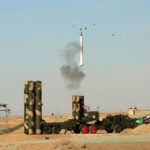
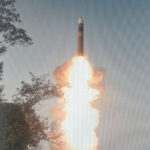



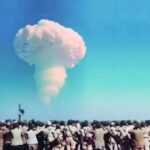
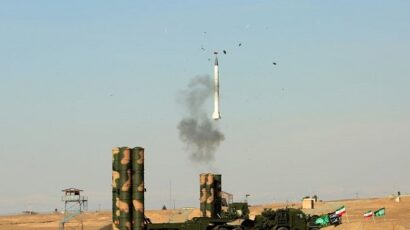







A timeline illustrating escalations by both sides would be helpful in understanding the current situation.
Excellent article. I must add a day after announcing the doomsday clock’s new time Russia announces combat ready deployment of Sarmat Nuclear missile platform rollout. Good timing albeit I would have probably moved it closer. I don’t mean to be an alarmist but it’s going to be tough to concentrate on a sure extinction threat like climate change when we are all focusing on nuclear armageddon threats escalating. I hope there really are other intelligent civilazations because once we go up in a puff of smoke and radioactive ash that’s all she wrote.